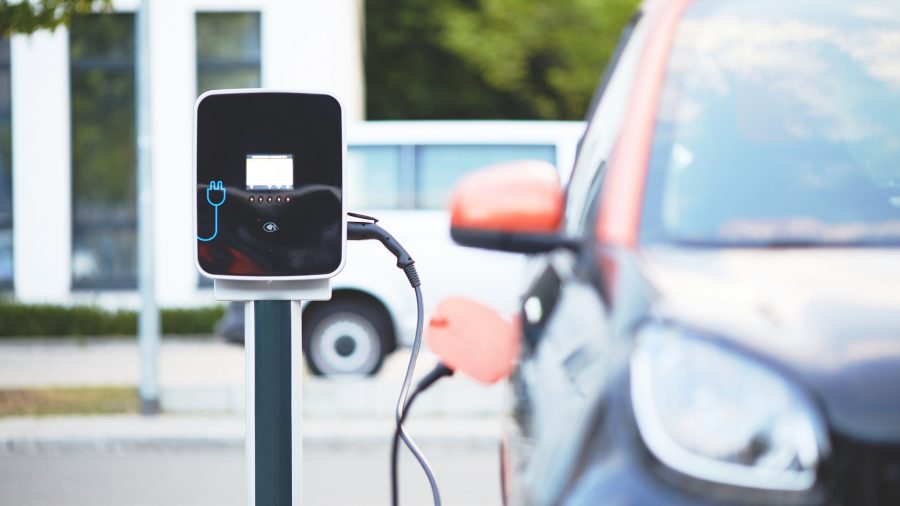The Federal Government wants 30% of all new car sales in Australia to be electric by 2030. It may be an ambitious goal. Currently, only 1.6% of new cars sold here are electric, compared to 4.2% in the rest of the world. Now that fuel prices are high, can you save money by buying an EV?
An ambitious goal for EVs
The Federal Government’s EV strategy wants at least 30% of all new car sales to be electric by 2030. That’s 1.7 million EVs, or 11% of all 15 million passenger cars on our roads in 8 years’ time.
Even so, messages about buying an EV have been mixed. In late 2021, Scott Morrison declared Australians love their “family sedan” or “trusted ute” and he wouldn’t force them through bans or taxes out of the car they want to drive.
During 2021, Australians bought only 17,243 EVs or 1.61% of all new cars sold.
The main problem is EVs are much more expensive to buy than their fuelled equivalents. Ultimately, Australians need good, rational reasons for buying an EV. One would be to save money on fuel.
When will my EV save me money on fuel?
If you’ve spent an extra $20,000 on an EV version, you want to know when the car could start paying for itself.
The average Australian passenger car uses 1,210 litres of fuel per year, based on using 11 litres per 100 km and a distance travelled of 11,000 kms each year. While petrol prices are high, say $2 per litre, a vehicle owner spends about $2,420 a year on fuel.
If you’ve paid $20,000 more for your EV, it would take more than 8 years to break even and start recouping the extra cost. (Note, this assumes a minimal electricity cost.)
However, most people don’t hold on to their cars for 8 years. The first life of a car – how long the original buyer holds it – is about 5 years. This means the first owner of an EV never recoups the cost of buying it and potentially loses around $8,000 over the first life.
Only if the average petrol price is much higher, at least $3.50 per litre, can the first owner of an EV break even quickly. However, the second owner of that EV could recoup their initial outlay within a year or two, depending on how much they pay for it.
Whether you can save money on an EV also depends on:
- Which EV model you want, and its regular alternative
- How much and how far you usually drive
- Whether your home has excess solar generation for charging.
Consultancy Evenergi compared the costs of running an SUV and an EV version that costs $16,000 more. In this case, you need to save $16,000 on fuel and maintenance to break even. It found only frequent, long distance drivers could recoup the high cost of an EV in 5 years. They would also need to charge their EV using home solar panels:
- You would drive 24,000 kms per year (twice the national average) for 5 years.
- The fuelled car would cost $16,000 in petrol and $6,000 on maintenance.
- The EV would cost $2,500 charging with solar panels and $3,000 on maintenance.
- You would save $500 over 5 years.
The less you drive, the fewer the opportunities for any savings on EVs.
Many people ask when will EVs cost the same to buy as fuelled versions.
When will EVs cost the same to buy?
The term, “price parity” refers to the time when EVs cost the same as regular vehicles. Many experts have an opinion; some say it could happen in the next 2-3 years.
However, it’s difficult to reach price parity without economies of scale. As long as relatively few people are buying EVs, it’s harder to reduce the price of them. While each state and territory has its own EV policies, manufacturers have to view Australia as lots of small markets.
Some carmakers are subsidising the cost of their EVs by charging more for their fuelled versions.
As ACAPMA states, most manufacturers are more focused on range parity than price parity. They want their cars to be able to travel the same distance per charge as regular vehicles get from a tank of fuel. This eliminates range anxiety.
Price parity may occur around 2024 and at the top end of the market – luxury vehicles and pricey EVs. Cheaper vehicles (around $25,000) are unlikely to reach price parity for 6 or 7 more years.
Will EVs ever be cheap?
The cheapest EV in Australia is $45,000, which is still too expensive for many people. They would be more affordable if Chinese companies BYD and Ora could sell them for $35,000 and $40,000 as claimed. But the high cost of manufacturing batteries is prohibitive for selling a cheap and cheerful EV. Volkswagen’s head claimed an EV costing around $14,000 is unlikely.
What is the answer? It’s up to fleet owners, such as governments and companies, to buy EVs. When these EVs go on the secondhand market, they will be more affordable for everyone.
For some people, the purpose of buying an EV is not necessarily to save money. They may be more focused on zero emissions, using more renewables, or quieter streets.
If you want to buy an electric car, you have to accept it’s expensive and you’re unlikely to recoup the extra cost in 5 years. However, when you sell it, your EV could help make them more affordable for everyone.
Do you want to buy an electric car? June 2020
See some surprising facts about electric cars.


your opinion matters: